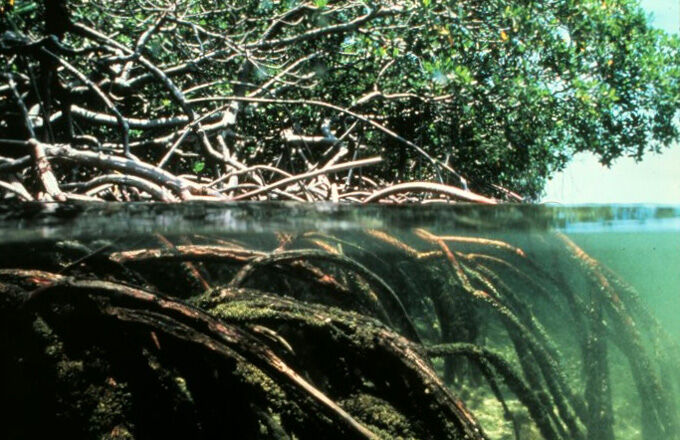The mangrove of Martinique
Martinique is a beautiful island that offers unique beaches and also lush vegetation located a few kilometers from the city. The mangrove is a unique ecosystem in Martinique, with vegetation used to the salty environment. The main purpose of this vegetation is to prevent coastal erosion, but also to protect species of corals.
The mangrove of Martinique covers an area of almost 1,800 hectares and represents around 6% of the forest area of the island. The Martinican mangrove is therefore mainly located in the center (at Robert, François, in the Baie des Anglais, on the Caravelle peninsula) and south of Martinique (Cul-de-sac le Marin, le Diamant). But the largest area of the mangrove is located in the Bay of Genipa, at the bottom of the bay of Fort-de-France, with almost 1000 hectares.
The importance of the mangrove The mangrove is a waterfront forest that grows on the coast of central and southern Martinique. This ecosystem plays a very big role for the island, because it serves as a buffer zone between the sea and the mouth of the rivers. The mangrove prevents coastal erosion and protects the corals from sediment deposits from the ground. As you can understand, this mangrove helps the island to keep its natural state without being disturbed by the variations of the sea. Diverse flora and fauna The fauna of the Martinican mangrove gathers a relatively large number of animals. You can therefore find species of crabs among which you will find: toulourous, spider crabs, etc. You will also find birds such as herons and egrets, but also, it will not be rare to find termite mounds and see clouds of fry between the roots of the mangroves. In fact, the forest is a real source of vitamin for young fish and they also find refuge there from predators. The flora in the mangrove is made up of various species of mangroves. These trees have a trunk that begins above the water with roots planted in the clay soil. In addition, water and soil are rich in salt, which prevents most trees from growing, and the few species that grow there are therefore adapted to this type of hostile environment.
Do you like the article ?
Please leave a review here.

